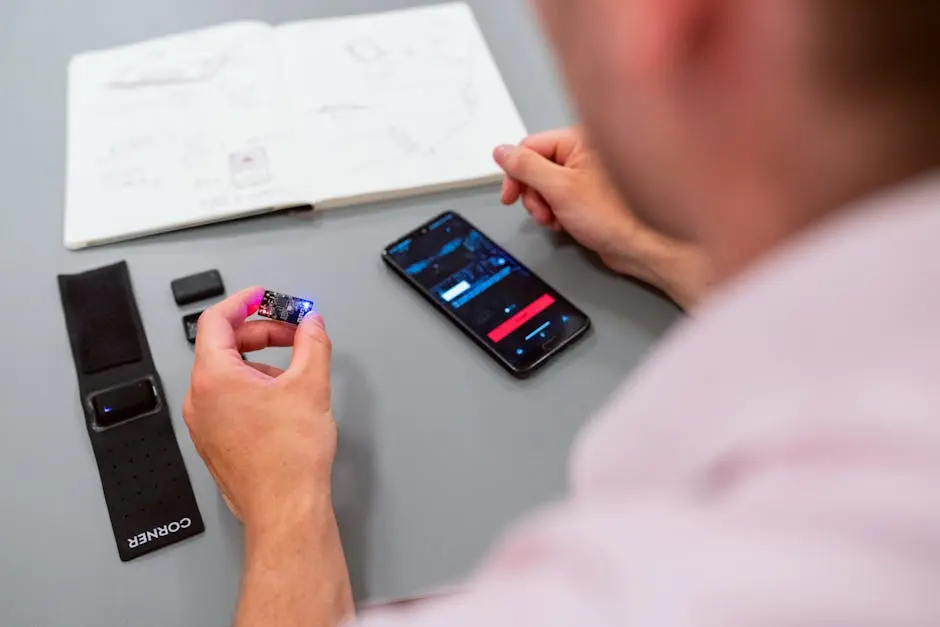Launching a Minimum Viable Product (MVP) can be both exciting and daunting. It’s the first tangible step in bringing your app idea to life, gauging real-world reception, and refining your vision based on user feedback. This step-by-step guide will walk you through the process of launching an MVP successfully, ensuring that your app is set for success.
1. Defining Your Core Vision
Start by clearly defining what your app intends to achieve. Break down your idea to its core functionalities without any bells and whistles. This will ensure that your MVP stays true to solving the essential problem you’ve identified. A clear vision not only guides your development process but also serves as a benchmark against which you can measure progress. It’s crucial to articulate this vision in a way that resonates with your team and potential users, ensuring everyone involved understands the core value proposition. To refine this vision, consider the broader context of your app’s place in the market and how it intends to uniquely address existing gaps.
2. Conducting Thorough Market Research
Understanding your target market is crucial. Research similar apps, identify your competition, and gather insights about your potential users’ needs and preferences to carve out a unique space for your app in the market. Use tools like surveys and user interviews to gather first-hand information about what your audience wants. Consider exploring market research strategies that focus on discovering key trends in user behavior and preferences. Analyzing competitors’ strengths and weaknesses will help you identify opportunities for differentiation and innovation within your app. Engaging with forums and social media platforms where your potential users congregate can provide valuable qualitative insights, helping to shape your app’s unique selling proposition.
3. Prioritizing Key Features
List all possible features and then narrow them down to those that are absolutely necessary for your MVP. Remember, simplicity is key at this stage. Focus on the features that provide the greatest value to the user. A crucial step in this process is creating a roadmap that aligns with your core vision while staying adaptable to user feedback. Prioritization involves tough decision-making, as you balance what’s essential against what can wait for later versions. Use a scoring system to evaluate features based on their impact and resources required. This also requires aligning team discussions around which functionalities are must-haves versus nice-to-haves, ensuring that your MVP remains efficient and purposeful.
4. Creating a Functional Prototype
Develop a working prototype that can demonstrate the core function of your app. This is vital for initial testing and gaining a visual and interactive understanding of your concept. Start with wireframes that map out the user journey and interactions, then move on to a clickable prototype using tools like Figma or Adobe XD. The idea isn’t to create something perfect but to provide a tangible product that stakeholders can interact with. This approach aids in identifying issues early and fosters collaborative revisions before substantial coding begins. Prototyping bridges the gap between conceptual and practical, offering a platform to test hypotheses and gather qualitative feedback from key stakeholders and potential users.
5. Testing with Real Users
Engage a select group of potential users to test your MVP. Gather their feedback on usability, functionality, and any issues they encounter to make necessary adjustments. This stage is all about user-centric refinement, turning feedback into actionable insights for development. Consider using a mix of in-person testing sessions and remote usability tests to broaden your data collection. Provide clear instructions and ask specific questions to elicit meaningful responses from test users. Conducting thorough usability testing not only highlights unforeseen issues but solidifies user trust and enhances user experience by actively involving them in your development process.
6. Preparing Your Launch Strategy
Plan how and where you will launch your MVP. Decide on the platforms you want to target first and develop a marketing plan to introduce your app to its first users effectively. Consider employing a soft launch strategy, which allows limited access to a segment of your target audience. This controlled environment helps in gaining initial traction while gathering actionable insights from early adopters. Additionally, crafting a compelling elevator pitch and ensuring your app’s online presence is optimized for discoverability are pivotal steps. Establishing a strong initial impression through organized PR efforts and aligning with influencers in your field further amplifies the reach.
7. Analyzing Feedback and Metrics
Post-launch, collect user feedback and analytics. Pay attention to key metrics that inform you about user engagement and satisfaction, and use this data to plan further updates or changes. Tools like Google Analytics and Hotjar can be instrumental in visualizing user behavior and identifying drop-off points. Setting Key Performance Indicators (KPIs) relevant to your app’s goals will help track progress and highlight areas needing improvement. Regularly evaluating both qualitative and quantitative feedback ensures balanced insights that guide strategic decision-making and align app enhancements with user expectations.
8. Iterating for Improvement
Based on the feedback and data collected, refine your app by adding new features, fixing bugs, and making improvements that enhance user experience. Iteration is crucial for evolving your MVP into a successful app. Embrace an agile approach, where periodic updates not only address existing issues but also introduce enhancements based on the latest user feedback. This cycle of refinement reinforces user engagement and satisfaction, ensuring that your app remains relevant and appealing. Regular team reviews and retrospectives aid in navigating this iterative process, fostering continuous improvement and aligning evolutions with strategic goals.


